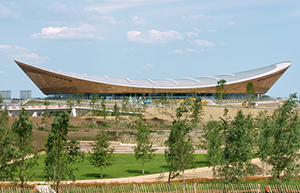As any wireless network operator’s customer engagement team will testify, providers are fighting a seemingly endless battle to achieve the levels of service demanded by today’s ‘always on’ subscriber. The key to winning this battle is in the provision of reliable and robust connectivity. An adequate signal and sufficient bandwidth is fundamental to enabling all of the other services customers expect, yet this is an area where many providers continue to struggle.
According to Ovum’s latest Telecoms Customer Insights study, the single biggest reason for subscriber churn in 2014 was inadequate broadband speed. This problem is especially prevalent indoors, where radio signals can struggle to penetrate through external walls.
During 2014, operators internationally spent a combined figure of £145billion[i] upgrading networks to support new services to improve technological ability, capacity and coverage provision. However, many providers are still accused of neglecting indoor provision where around 80% of data usage currently takes place.
 It is a difficult problem to solve. Building materials old and new provide a range of issues that inhibit the propagation of indoor cellular coverage. From RF-blocking stone and marble to modern structures made of reflective materials, getting signals inside from masts outside remains a challenge. This poor signal quality then has a direct impact on network capacity, reducing data throughput dramatically. Seamless four-bar data coverage is therefore central to the user experience.
It is a difficult problem to solve. Building materials old and new provide a range of issues that inhibit the propagation of indoor cellular coverage. From RF-blocking stone and marble to modern structures made of reflective materials, getting signals inside from masts outside remains a challenge. This poor signal quality then has a direct impact on network capacity, reducing data throughput dramatically. Seamless four-bar data coverage is therefore central to the user experience.
Rewind five years and the main challenge for carriers was how to extend coverage into venues to allow subscribers to use basic voice and messaging services. With the widespread proliferation and demand for mobile data services, this need has now evolved away from basic coverage towards the provision of adequate capacity to allow bandwidth-intensive services, ranging from email and social media, to secure enterprise apps, cloud server access and HD video calling.
To meet this need, operators must employ a range of coverage-enhancement technologies such as Distributed Antenna Systems (DAS), Wi-Fi and Small Cells.
DAS is an important part of any operator’s indoor coverage strategy. Unlike Wi-Fi, DAS can enable the whole spectrum of wireless communications services rather than just data. It also provides much greater flexibility than small cells. In addition to supporting every major wireless technology including GSM, WCDMA and LTE, Fibre DAS is also capable of providing IP backhaul infrastructure serving, for example, small cells and devices such as surveillance cameras – reducing overall OPEX costs.
DAS has already been successfully deployed to propagate cellular coverage in high-profile facilities such as the London Olympic Stadium and The Shard. Providing a robust service for bandwidth intensive activity in these challenging environments improves customer experience, encourages data usage and reduces coverage-related complaints.
 By deploying a toolkit of indoor coverage solutions, including DAS, operators can dramatically improve their customers’ everyday wireless broadband experience and directly address one of the key causes of churn. Operators who continue to ignore the indoor issue face losing customers and ultimately feeling the pinch on their bottom line.
By deploying a toolkit of indoor coverage solutions, including DAS, operators can dramatically improve their customers’ everyday wireless broadband experience and directly address one of the key causes of churn. Operators who continue to ignore the indoor issue face losing customers and ultimately feeling the pinch on their bottom line.
[i] The Mobile Economy 2015, GSMA Intelligence, March 2015
By Moti Shalev, Director of Product Management, Cobham Wireless






